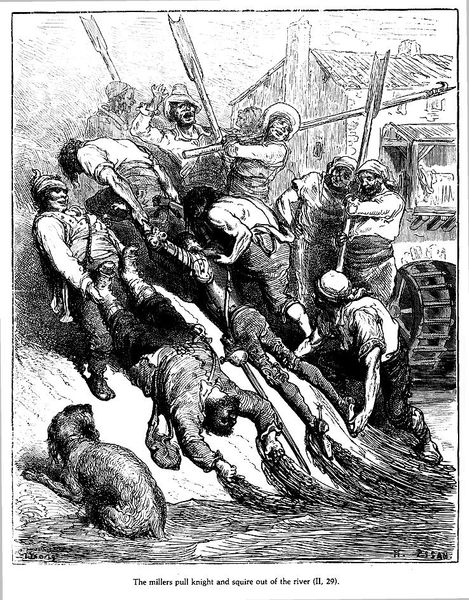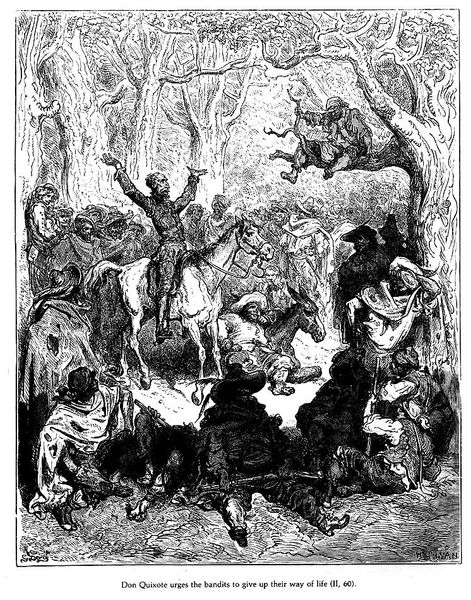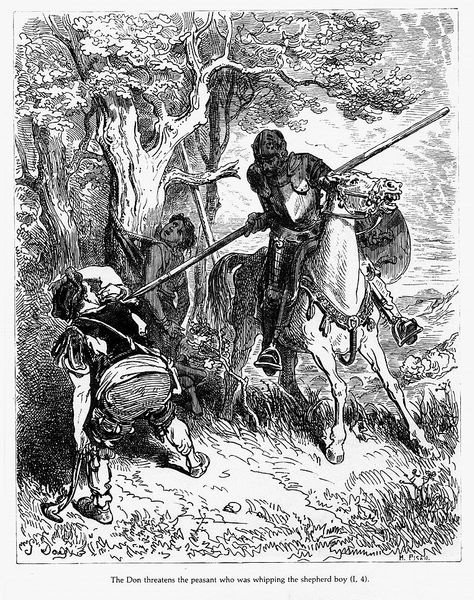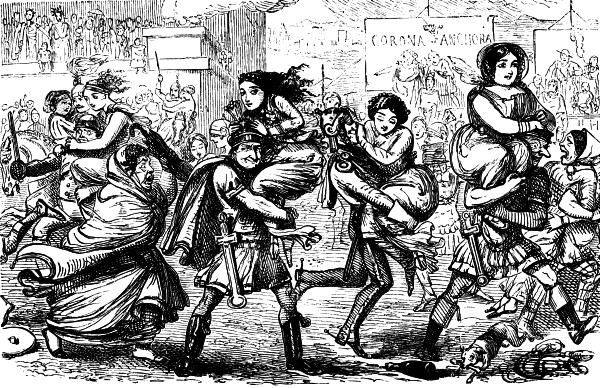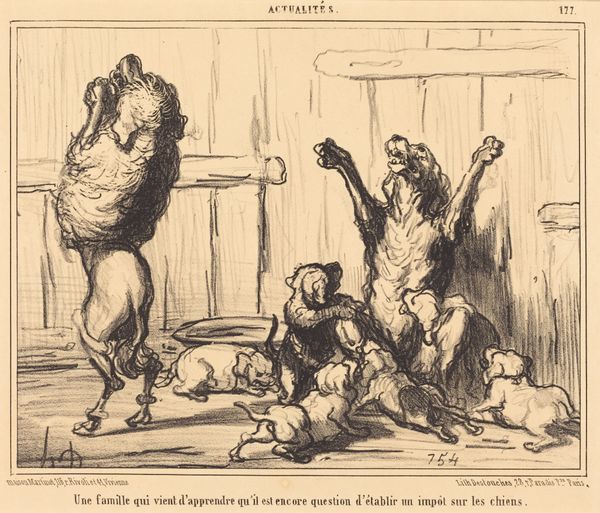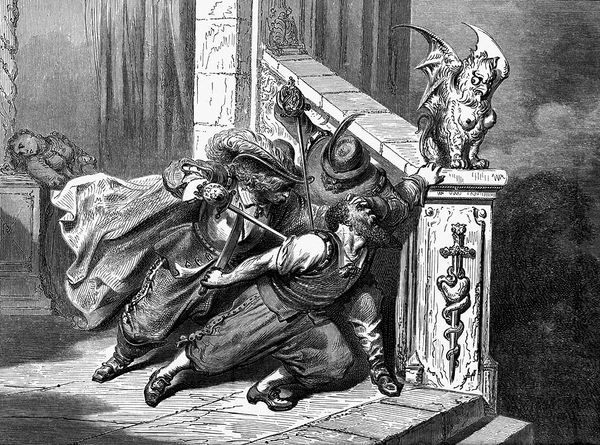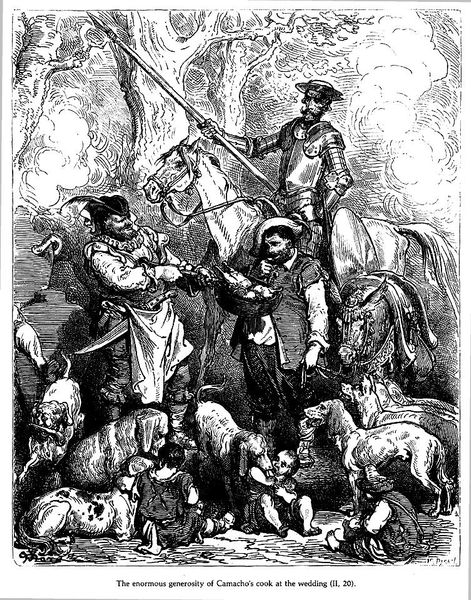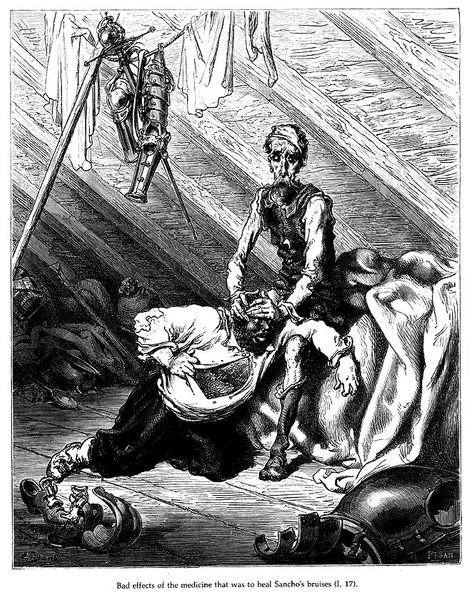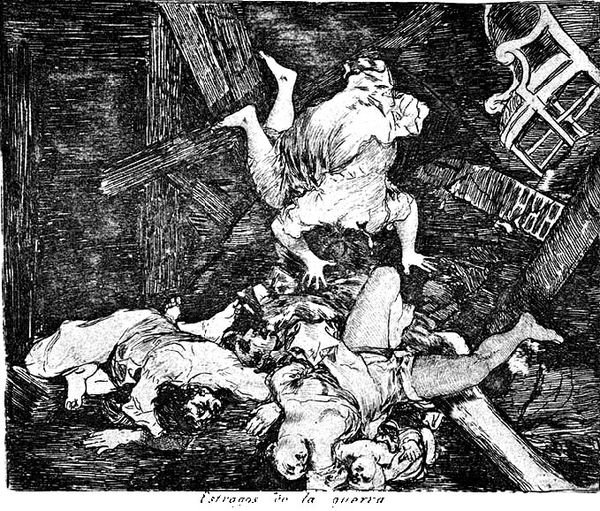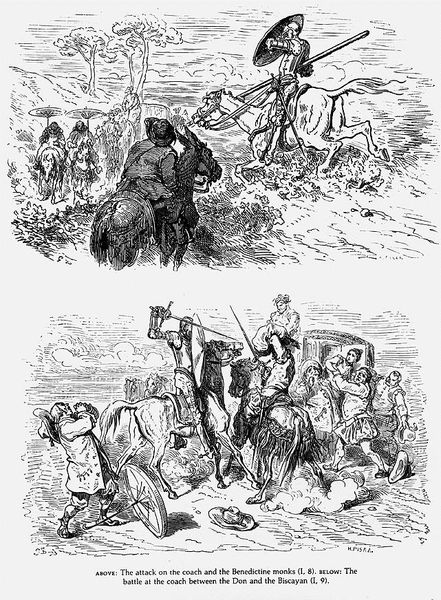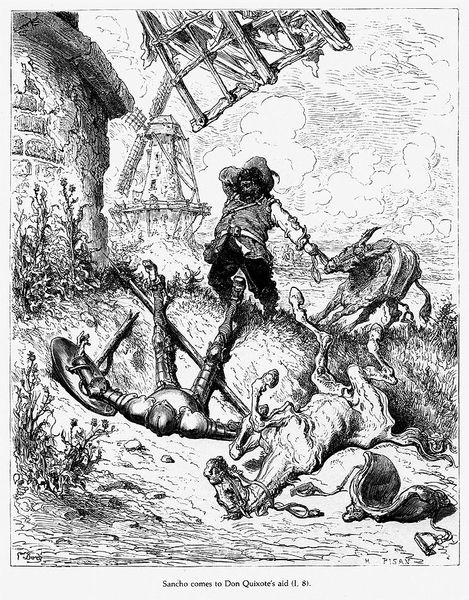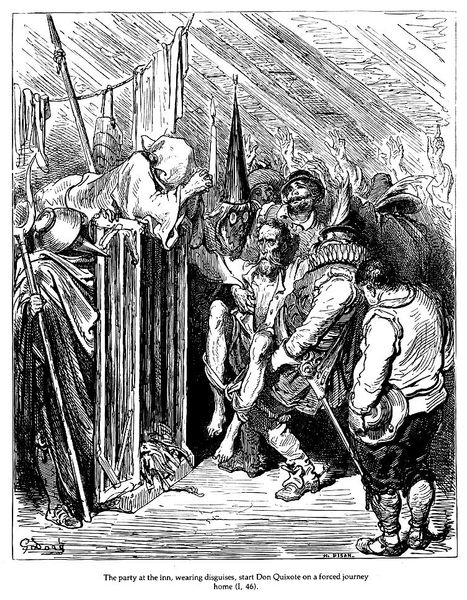
Copyright: Public domain
Editor: Gustave Doré’s illustration for Baron von Münchhausen, created around 1862 using engraving techniques, portrays a rather bizarre scene! Two figures appear to be fiercely battling... something amorphous. What can you tell us about this image? Curator: This image pulsates with potent symbolism and cultural echoes. Note the exaggerated gestures and near grotesque rendering of the central form. Doré, drawing from a well of Romanticism, isn't simply illustrating; he's invoking anxieties about the monstrous "Other." Consider how often societies project their fears onto imagined figures. Does the amorphous quality of the monster remind you of anything? Editor: I guess it looks kind of like a sea monster? Curator: Perhaps! And water is frequently used as a metaphor for the unconscious. The Baron's exaggerated stories become a vessel where cultural and personal fears are given a shape, fought and hopefully defeated, demonstrating control. We can remember earlier imagery that deals with battles between humanity and monsters: Theseus versus the Minotaur, St George versus the dragon, and so on. So, in a sense, is Doré placing the Baron within a lineage of heroes? Editor: That makes me look at the fallen hat and discarded shoe with a different appreciation. It does connect this image to this grand theme of heroes slaying beasts, of knowledge prevailing! Curator: Indeed. And that lineage continues, consider how prevalent the imagery is within comics or films. The symbolic power continues through shifting visual codes, changing costumes, and weapons. This small engraving, therefore, serves as a powerful echo chamber. Editor: Wow, it’s really cool how much cultural context and symbolism is packed into a simple drawing! It changes how you see, think, and decode what's in front of you. Curator: Absolutely. Art invites us to actively participate in understanding, decoding cultural patterns that still resonate.
Comments
No comments
Be the first to comment and join the conversation on the ultimate creative platform.
